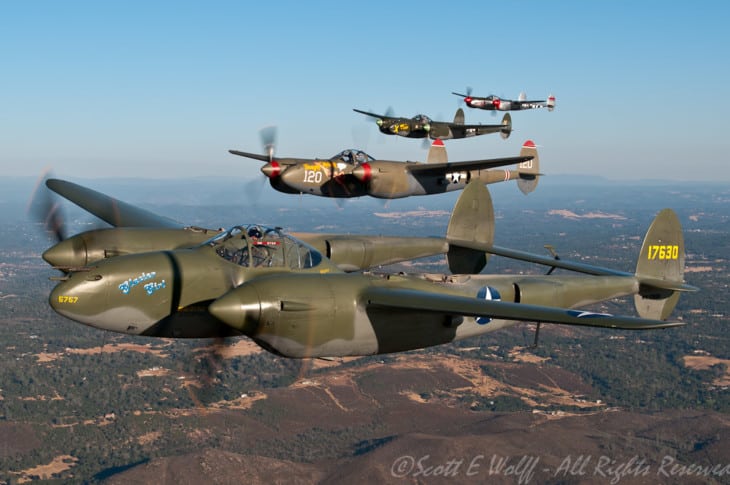

The Second World War is remembered through the airplanes that survive from it. There were land-based campaigns and naval battles, but the war was fought and won in the air. Aviation was advanced enough that it became the defining aspect of the generation – fleets of thousands of bombers and fighters zooming across the skies struck terror in one’s enemies and hope in their allies.
World War II marked the maturity of aerial warfare. Planes had advanced enough since WWI to be able to fill specific niches. During WW2, the primary missions fulfilled by airplanes were air-to-air combat, bombing, aerial reconnaissance, and troop and supply transportation. Since many designs were based on pre-war civilian aircraft, many similar airplanes filled multiple roles.
Table of Contents
Aircraft of all shapes and sizes played a vital role in the battlefields of WW2. From the moment the war broke out in Europe, major powers scrambled to produce enough aircraft. The industry expanded in leaps and bounds throughout the war, both in terms of scale and technological advancement.
According to the Smithsonian Institute, military aviation in the United States alone expanded from around 2,500 aircraft to nearly 300,000 by the war’s end. Many factories were retooled to produce aircraft and their components, and a considerable effort was made by the entire country to produce supplies for the war. Production of consumer goods all but stopped during the period as factories produced planes and ships and all of their associated components.
Even before America entered the war, British and French forces ordered planes and supplies from US manufacturers. By 1944, the US was making almost 100,000 planes per year.
Related Article:While men were drafted into service, women went to work in factories to help build planes and supplies. Factories worked 24/7 and hired millions of workers. Raw materials even had to be rationed. Pennies minted in 1943 and 1944 were made of steel, but not copper. The copper was too valuable for use in aircraft wiring and ammunition.
One tremendous advancement to come to the aviation industry during the war was the turbine engine. Jet engines rendered pistons all but obsolete by the end of the war. There were, of course, many other advancements made, including rocketry and missiles.
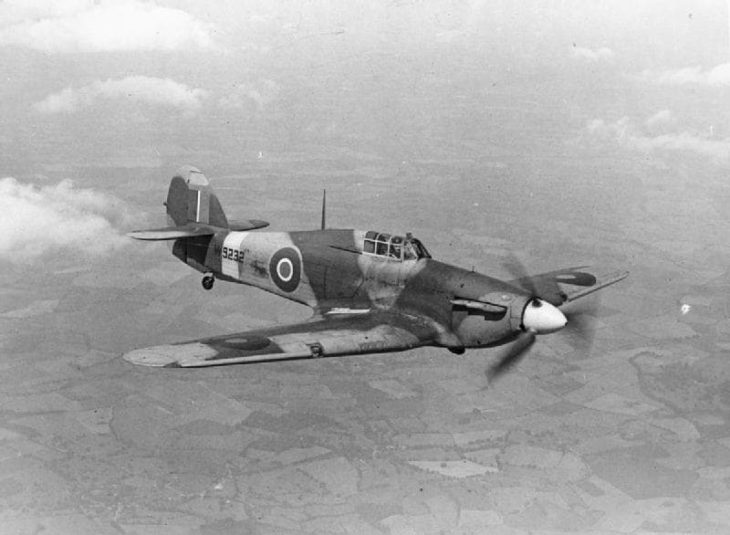
The light, piston-powered single-engine fighter monoplane dominated the dogfights of World War II. These planes were fast and highly maneuverable. They were also versatile enough to be able to complete different tasks as their missions required.
The most famous US-built fighter of WW2 was undoubtedly the North American P-51 Mustang. The small single-engine fighter was powered by a monstrous 1,695 horsepower V-12 engine and could reach almost 500 mph. Armed six .50 caliber machine guns and a bomb rack that could also carry external fuel tanks, the multi-role missions of the P-51 demonstrate well how fighters were used in the Second World War.
Related Article:Their primary mission was to engage enemy fighters in the air, known as dogfighting. Such activity required quick piloting and a maneuverable, fast aircraft. Air-to-air machine guns were used in close range combat. The P-51 fought opponents like the Japanese Mitsubishi “Zeros” in the Pacific and the German Fokkers and Messerschmitts.
The incredible speeds these planes were capable of and their ability to fly long-range also lent to their use as interceptors. They could be sent to intercept and attack incoming bombers or rockets. They could also be sent on reconnaissance missions across enemy lines to monitor troop movements and other scouting tasks. The P-designation was derived from the word “pursuit.”
Fighters were often used to escort bombing raids. The bombers could carry many munitions, but they were slow-moving easy targets for enemy fighters. Most bombing missions would feature dozens of bombers and numbers of fighter escorts for their protection.
Since fighters could also be loaded with a few bombs, they could be used for stealthy high-value target campaigns. One or two small fighters could sneak behind enemy lines with much less fanfare than an entire bombing group.
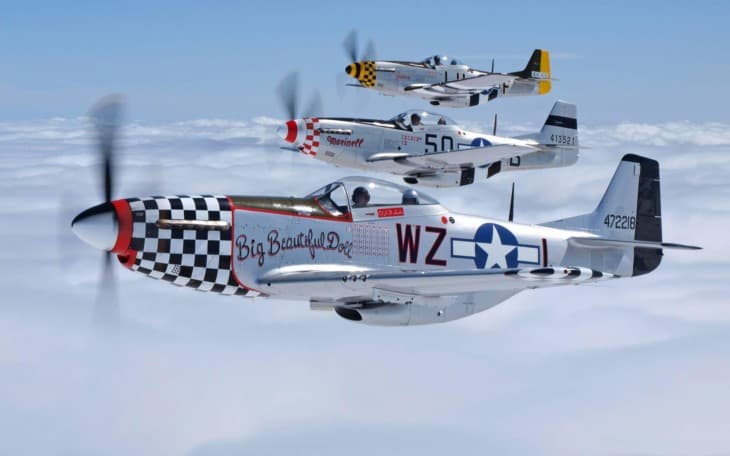
The Mustang is just one example of the exemplary designs to be used during the time. The Vought F4 Corsair, Lockheed P-38 Lightning, and the Grumman F6 Hellcat are examples of multi-role fighters used during the war by the Allied troops.
Aircraft manufacturers who had been building airliners and transport category aircraft before the war went to work making heavy bombers. These bombers were built on large, multi-engine airframes that could carry thousands of pounds of bombs. These were modifications of airliner designers, so they were able to be designed and produced quickly.
Dropping a large number of munitions on a target was a significant advancement of the Second World War. Bombing in WWI was limited to what pilots could physically drop from the cockpits of their small planes. Technology now allowed heavy airplanes to carry thousands of pounds of bombs for thousands of miles. Bombers could approach from high altitudes with a certain amount of stealth and surprise. The B-29 Superfortress was used to drop nuclear weapons on Japan in 1945.
Want More of This? We'll send you our latest and best content straight to your inbox
Boeing built the famous B-17 Flying Fortress and the B-29 Superfortress. Other Allied examples included the Consolidated B-24 Liberator and the North American B-25 Mitchell. Boeing made 12,372 B-17s between their introduction in 1935 and the end of the war in 1945. It was initially based on the Model 247, which was Boeings first really successful airliner.
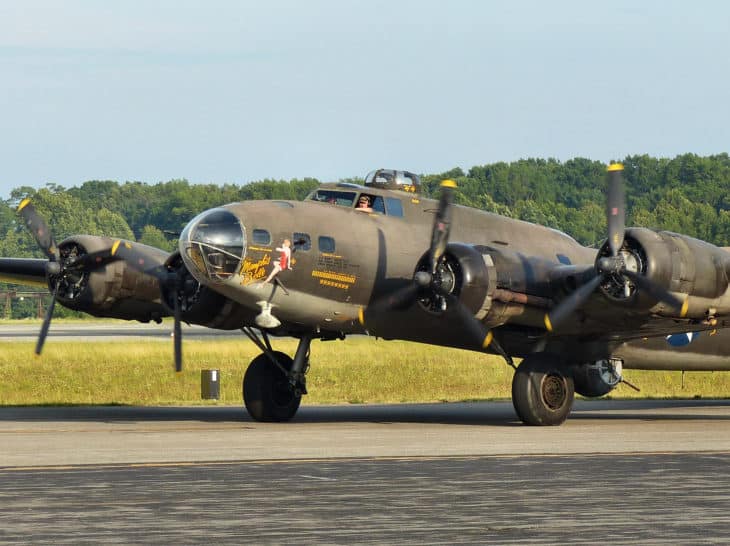
Most major European bombing raids began from airbases in England, and they lasted for eight hours or more, and they journeyed beyond enemy lines and returned to base. Some of the biggest groups could include more than 1,000 bombers.
With a wingspan of 103 feet and a maximum takeoff weight of 65,000 pounds, these planes were small by today’s standards. But at the time, they were technological marvels of engineering. Their four engines allowed them to cruise at up to 287 mph and 35,000 feet.
They carried 13 machine guns and a load of 9,600 pounds of bombs. They earned a reputation for tough to the point of being nearly indestructible, with many returning damaged heavily from missions, but still returning home for a safe landing.
Moving troops and equipment to the front lines is an essential part of wartime aviation, as well. At the front lines, equipment and supplies need to be ferried, and the wounded need to be evacuated. For these missions, unarmed or lightly-armed transport aircraft were used.
During the early years of the war, nearly all civilian ocean liners and airliners were conscripted into military service. As the war dragged on, many of these designs were modified to become the heavy bombers or military transports that made up the fleet’s backbone.
Even the iconic Pan American Clipper flying boats became troop transports during the war. Pan Am pilots continued to operate their planes, but the government paid them. The luxurious accommodations were removed in favor of carrying more cargo and people.
The most famous example of a wartime transport airplane was the Douglas DC-3, which was the Douglas C-47 Skytrain when in service. The DC-3 was a popular airliner of the time. Introduced in 1936, it carried between 21 and 32 passengers at about 200 mph. The C-designation referred to “cargo.”
A variant of the same airframe, the C-53 Skytrooper, was specially designed to carry and drop paratroopers. During the first few days of the Invasion of Normandy, C-47s and C-53s dropped more than 50,000 paratroops.
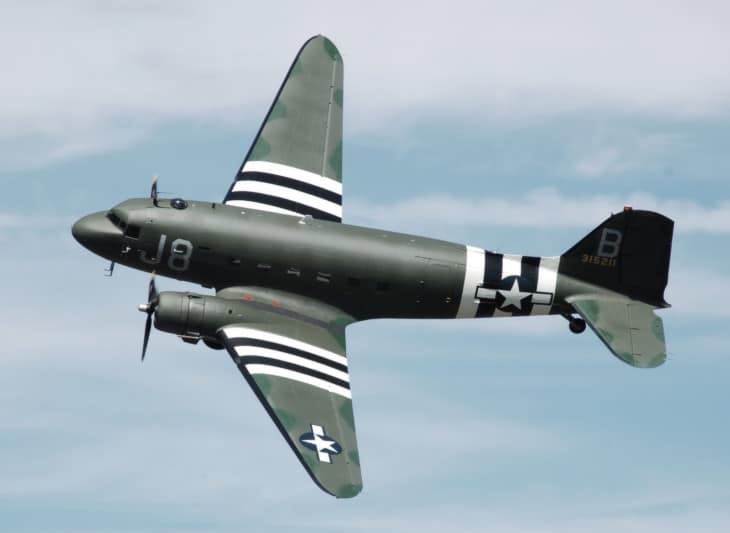
The C-47 got the nickname “Gooney Bird” due to its use in ferrying soldiers back home across the Pacific. The albatross that make their home on Midway Island share the same nickname, and the C-47s were the first planes to land there.
Aerial reconnaissance was a burgeoning mission-form during WWII. Ballooning and light aircraft had been used during the First World War, but technology had advanced such that any reconnoitering missions became very high risk. Airplanes needed to flying higher, faster, or under cover of darkness.
For the most part, air forces used specially modified fighters for reconnaissance work. The F-designation was given to aircraft with modification for aerial photography. A well-known example is the F-4, not to be confused with the Vietnam-era jet aircraft with the same designation. In WWII, the F-4 was a reconnaissance version of the P-38 Lightning twin-engine fighter.
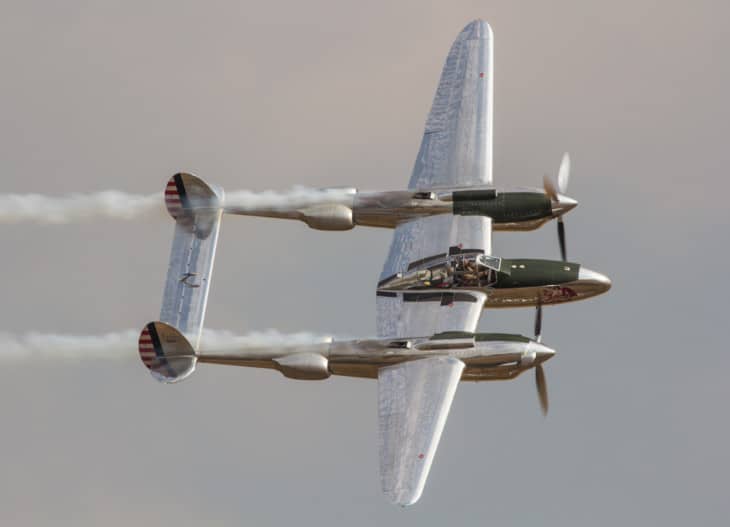
Later in the war, variants of the P-51 Mustang (F-6), the Spitfire, and the De Havilland Mosquito (F-8) were popular for reconnaissance work. The F-9 was a reconnaissance variant of the B-17 bomber.
Of particular interest was the Canadian-built Consolidated PBY Catalina. This flying boat was built for maritime patrolling and sea rescue missions, and it had some limited bombing abilities too.
The planes featured an elevated high-wing design and huge viewing windows in the fuselage, both features giving the plane excellent visibility. They participated in some of the most critical anti-submarine missions in both the Atlantic and Pacific.
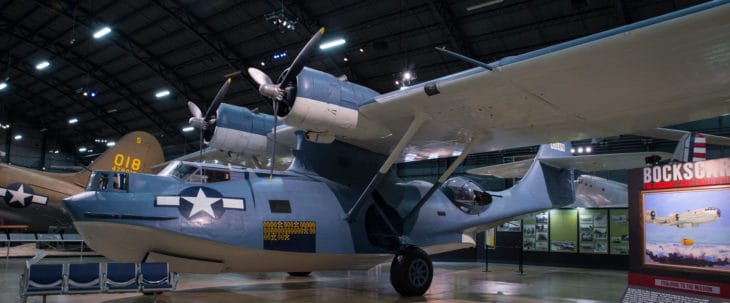
With all of the high-performance airframes going to war, a considerable need was found on the home front for training aircraft—all of those soldiers going to war needed to learn how to fly first. Flight training was greatly accelerated, but simple training aircraft were still needed for the early stages.
The Piper Aircraft Company built over 20,000 J-3 Cubs between 1935 and 1947. They were simple, easy to fly, and affordable. They came in yellow, which became an iconic color of the time for training aircraft.

Even though it was primarily a training aircraft, the Cub was also produced as the L-4 Grasshopper. It could carry a pilot and one passenger and was used for some limited reconnaissance, supply transporting, and medical evacuations.
Besides airplanes, other types of aircraft say extensive use during WWII. The Navy used airships for reconnaissance work and anti-submarine warfare. They could carry radar, sonobuoys, and magnetic anomaly detection equipment. Some could carry depth bombs, too.
Helicopters and autogyros were also beginning to play a part in the war. This was new technology, and it matured more with each year. The early variants were gyrocopters, which flew like airplanes but had spinning rotors instead of wings. They were not capable of vertical takeoffs or landings like modern helicopters are.
There were also advances in rocketry during WW2. Germany, in particular, launched campaigns of terror against England with their V2 rockets. These could be launched from mainland Europe and strike London minutes later with little or no warning. These weapons of destruction lead directly to the Space Age and putting man in orbit and on the moon.